
Apple TV is a digital media player and microconsole developed and marketed by Apple Inc. It is a small piece of networking hardware that sends received media data such as video and audio to a TV or external display. Its media services include streaming media, TV Everywhere-based services, local media sources, and sports journalism and broadcasts.
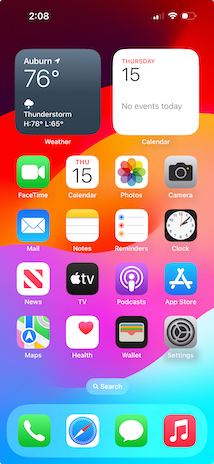
iOS is a mobile operating system developed by Apple Inc. exclusively for its smartphones. It was unveiled in January 2007 for the first-generation iPhone, launched in June 2007.
Cocoa Touch is the application development environment for building software programs to run on iOS for the iPhone and iPod Touch, iPadOS for the iPad, watchOS for the Apple Watch, and tvOS for the Apple TV, from Apple Inc.
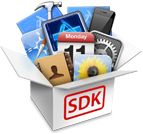
The iOS SDK, formerly the iPhone SDK, is a software development kit (SDK) developed by Apple Inc. The kit allows for the development of mobile apps on Apple's iOS and iPadOS operating systems.

iOS 8 is the eighth major release of the iOS mobile operating system developed by Apple Inc., being the successor to iOS 7. It was announced at the company's Worldwide Developers Conference on June 2, 2014, and was released on September 17, 2014. It was succeeded by iOS 9 on September 16, 2015.
Cycada is a compatibility layer that aims to allow applications designed for iOS to run unmodified on the Android operating system. The method uses compile-time adaptation to run unmodified code with minimal implementation effort.
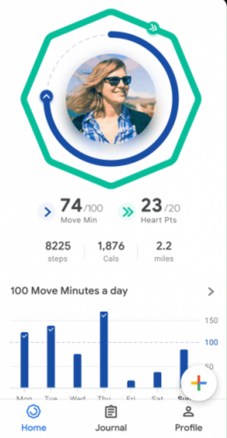
Google Fit is a health-tracking platform developed by Google for the Android operating system, Wear OS, and iOS. It is a single set of APIs that blends data from multiple apps and devices. Google Fit uses sensors in a user's activity tracker or mobile device to record physical fitness activities, which are measured against the user's fitness goals to provide a comprehensive view of their fitness.

The Apple Watch is a smartwatch produced by Apple Inc. It incorporates fitness tracking, health-oriented capabilities, and wireless telecommunication, and integrates with watchOS and other Apple products and services. The Apple Watch was released in April 2015, and quickly became the best-selling wearable device: 4.2 million were sold in the second quarter of fiscal 2015, and more than 115 million people were estimated to use an Apple Watch as of December 2022. Apple has introduced a new generation of the Apple Watch with improved internal components each September—each labeled by Apple as a 'Series', with certain exceptions.

watchOS is the operating system of the Apple Watch, developed by Apple Inc. It is based on iOS, the operating system used by the iPhone, and has many similar features. It was released on April 24, 2015, along with the Apple Watch, the only device that runs watchOS. watchOS exposes an API called WatchKit for developer use.

HomeKit, also known as Apple Home, is a software framework and communication protocol developed by Apple Inc. that lets users configure, communicate with and control smart-home appliances using Apple devices. It provides users with a way to automatically discover such devices and configure them. By designing rooms, items and actions in HomeKit, users can enable automations in the home through a voice command to Siri or through the Home app. With HomeKit, developers are able to create complex applications in order to manage accessories at a high level.

The iPad Air 2 is the second-generation iPad Air tablet computer designed, developed, and marketed by Apple Inc. It was announced on October 16, 2014, alongside the iPad Mini 3, both of which were released on October 22, 2014. The iPad Air 2 is thinner, lighter and faster than its predecessor, the first-generation iPad Air, and features Touch ID with the height, width and screen size the same as the iPad Air.

tvOS is an operating system developed by Apple Inc. for the Apple TV, a digital media player. In the first-generation Apple TV, Apple TV Software was based on Mac OS X. Starting with the second-generation, it is based on the iOS operating system and has many similar frameworks, technologies, and concepts.

Weather is a weather forecast app developed by Apple Inc., available on iOS since the release of the iPhone and iPhone OS 1 in 2007. It allows users to see the conditions, forecast, temperature, and other related metrics of the device's current location, as well as a number of other cities. A version of Weather is also available for watchOS; however, it is limited in functionality. Weather was made available on more devices across the Apple ecosystem with the releases of iPadOS 16 and macOS Ventura, where weather data from Apple was previously only available as a widget or through Siri.

iOS 13 is the thirteenth major release of the iOS mobile operating system developed by Apple Inc. for the iPhone, iPod Touch and HomePod. The successor to iOS 12, it was announced at the company's Worldwide Developers Conference (WWDC) on June 3, 2019, and released on September 19, 2019. It was succeeded by iOS 14, released on September 16, 2020.
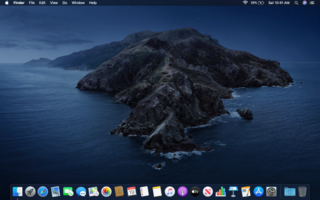
macOS Catalina is the sixteenth major release of macOS, Apple Inc.'s desktop operating system for Macintosh computers. It is the successor to macOS Mojave and was announced at WWDC 2019 on June 3, 2019 and released to the public on October 7, 2019. Catalina is the first version of macOS to support only 64-bit applications and the first to include Activation Lock. It is also the last version of macOS to have the major version number of 10; its successor, Big Sur, released on November 12, 2020, is version 11. In order to increase web compatibility, Safari, Chromium and Firefox have frozen the OS in the user agent running in subsequent releases of macOS at 10.15.7 Catalina.
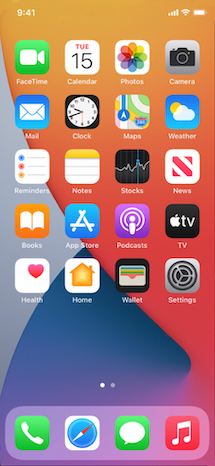
iOS 14 is the fourteenth major release of the iOS mobile operating system developed by Apple Inc. for the iPhone and iPod touch lines. Announced at the company's Worldwide Developers Conference on June 22, 2020 as the successor to iOS 13, it was released to the public on September 16, 2020. It was succeeded by iOS 15 on September 20, 2021.

iOS 15 is the fifteenth major release of the iOS mobile operating system developed by Apple for its iPhone and iPod Touch lines of products. It was announced at the company's Worldwide Developers Conference on June 7, 2021, as the successor to iOS 14 and released to the public on September 20, 2021.

Workouts is a fitness companion and activity recording application developed by Apple Inc. for Apple Watch devices, used to start workout tracking and view metrics while an exercise activity is in progress. The app was first introduced alongside watchOS 1 on April 24, 2015, and is tightly integrated into the operating system's health tracking features. All workout history and deeper workout metrics can be viewed from within the Fitness and Health apps on a connected iPhone.



















